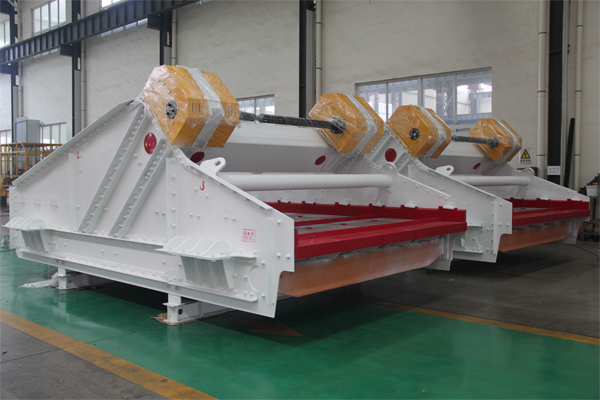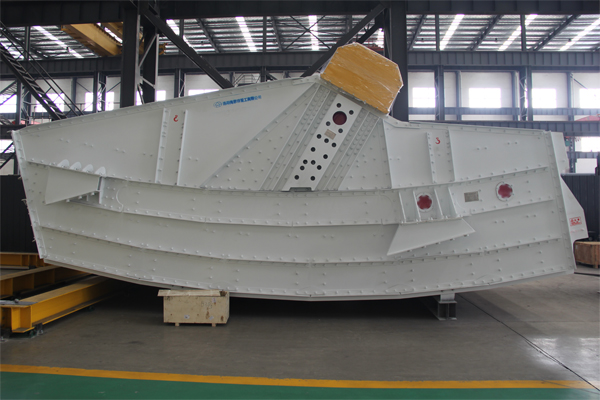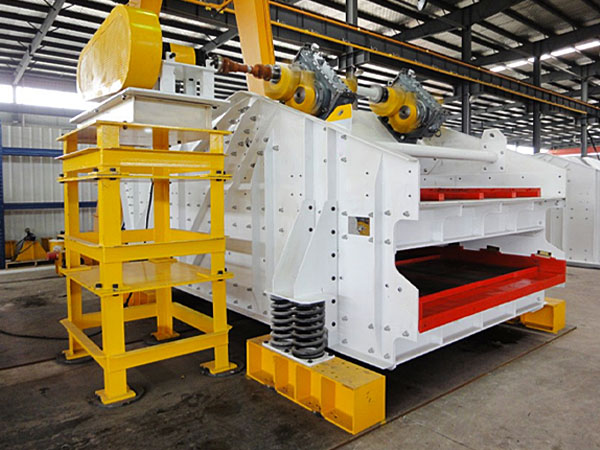What to do if the vibrating screen motor overheats?
Vibrating screens play a crucial role in material screening across various industries, relying heavily on electric motors to drive vibration. However, one common and potentially damaging issue is motor overheating. Overheating not only shortens the lifespan of the motor but also leads to decreased efficiency, unexpected downtime, and costly repairs. Understanding the causes, signs, and prevention methods of vibrating screen motor overheating is essential to ensure continuous, reliable operation and to extend equipment life.
Vibrating Screen Motor Overheating Solution

Immediate Actions (Safety First!):
Stop the Screen Immediately: Turn off the vibrating screen and ensure it cannot be accidentally restarted (lockout/tagout procedures are crucial here). Continuing to run an overheating motor can cause it to burn out or create a fire hazard.
Allow it to Cool Down: Let the motor cool down completely before attempting any inspection or maintenance. Do not touch the motor housing as it can be extremely hot and cause burns.
Troubleshooting and Investigation (Once the Motor is Cool):
Identify the Cause: Try to determine why the motor is overheating. Common causes include:
Overloading: Is the screen being fed more material than it’s designed for?
Voltage Issues: Is the voltage supply to the motor too high or too low?
Bearing Problems: Are the motor bearings worn out, lacking lubrication, or contaminated? This is a very common cause of motor overheating in vibrating screens.
Insufficient Lubrication: Lack of proper lubrication in the motor bearings or other moving parts of the vibrating mechanism can cause excessive friction and heat.
Excessive Lubrication: Surprisingly, too much grease can also cause overheating by creating excessive churning and heat buildup.
Improper Lubricant: Using the wrong type or grade of lubricant can lead to inadequate lubrication and overheating.
Dust and Debris Buildup: Accumulation of dust and material on the motor housing can act as insulation, preventing proper heat dissipation.
Poor Ventilation: Is the motor adequately ventilated? Obstructions around the motor can trap heat.
Loose Connections: Loose electrical connections can cause increased resistance and heat generation.
Mechanical Issues: Are there any mechanical obstructions or imbalances in the screen or drive mechanism that are putting extra load on the motor?
Worn Drive Belts (if applicable): Loose or overly tight drive belts can strain the motor.
Internal Motor Fault: In some cases, the overheating could be due to an internal electrical fault within the motor windings.
High Ambient Temperature: Extremely high working environment temperatures can contribute to motor overheating.

Check for Obvious Signs:
Smell: Is there a burning smell coming from the motor?
Noise: Are there unusual noises like grinding or whining?
Visible Damage: Are there any signs of smoke, discoloration, or damage to the motor housing or wiring?
Lubricant Leaks: Check for any lubricant leaks around the motor or bearings.
Corrective Actions:
Based on the identified cause, take the following steps:
Reduce Load: If the screen is overloaded, decrease the feed rate.
Check Voltage: Use a multimeter to verify that the voltage supply to the motor is within the specified range. Consult an electrician if there are voltage issues.
Lubricate Bearings: If the bearings are dry, lubricate them according to the manufacturer’s recommendations with the correct type and amount of grease.
Replace Bearings: If the bearings are worn or damaged, they will need to be replaced by a qualified technician.
Clean the Motor: Remove any dust and debris buildup from the motor housing to improve heat dissipation.
Improve Ventilation: Ensure adequate airflow around the motor. Remove any obstructions and consider installing fans if necessary, especially in hot environments.
Tighten Connections: Check and tighten all electrical connections.
Address Mechanical Issues: Inspect the screen and drive mechanism for any mechanical problems and correct them.
Adjust or Replace Drive Belts: Ensure proper tension and replace worn belts.
Seek Professional Help: If you suspect an internal motor fault or are uncomfortable performing any of the above steps, consult a qualified electrician or a technician specializing in vibrating screen maintenance. Motor rewinding or replacement may be necessary.

Preventive Measures:
To prevent future motor overheating:
Regular Maintenance: Implement a regular maintenance schedule that includes:
Lubrication: Consistent and correct lubrication of motor bearings and other moving parts.
Cleaning: Regular cleaning of the motor housing to remove dust and debris.
Inspection: Periodic inspection of electrical connections, drive belts, and the overall condition of the motor and screen.
Tightening: Regularly check and tighten all bolts and fasteners.
Monitor Operating Conditions: Pay attention to the material feed rate and ensure it stays within the screen’s capacity. Monitor the ambient temperature, especially during hot weather.
Proper Installation: Ensure the motor was installed correctly, including proper alignment and mounting. Vertical or inclined installations may require specific motor types with additional internal support.
Use the Correct Motor: Ensure the motor is appropriately sized for the application and the demands of the vibrating screen.
Consider Thermal Overload Protection: Many motors have built-in thermal overload protection that will automatically shut off the motor if it overheats. Ensure this protection is functioning correctly.
By taking these steps, you can address the immediate issue of an overheating vibrating screen motor and implement measures to prevent it from happening again, ensuring the longevity and reliable operation of your equipment.



